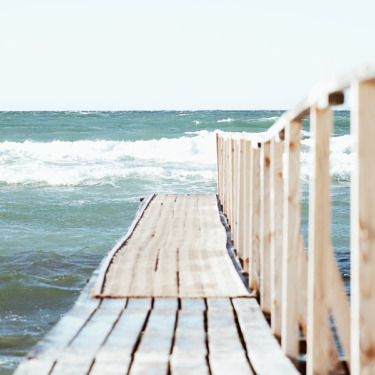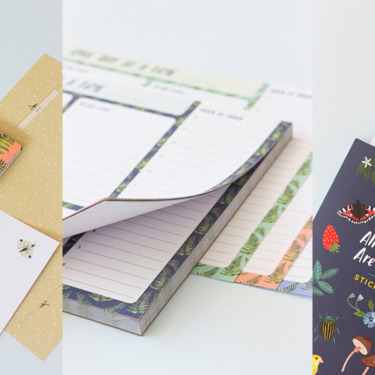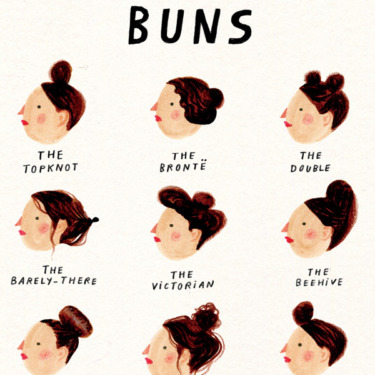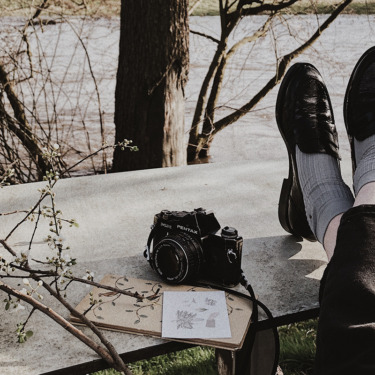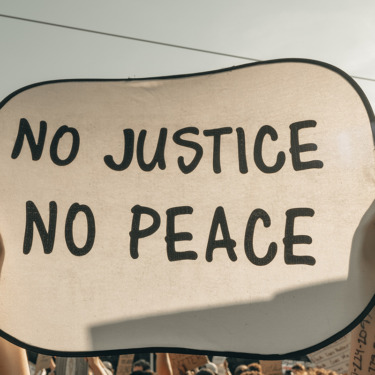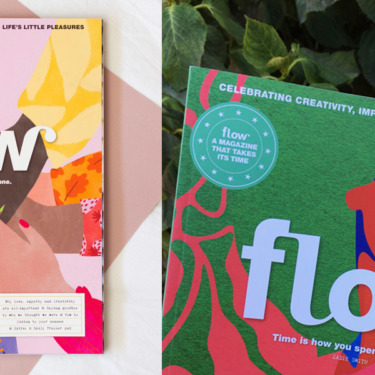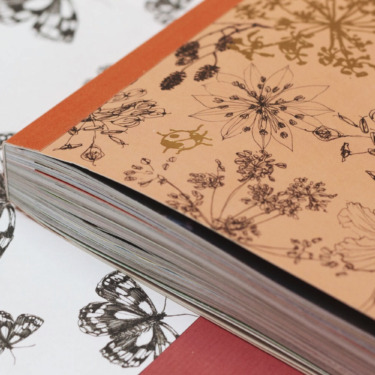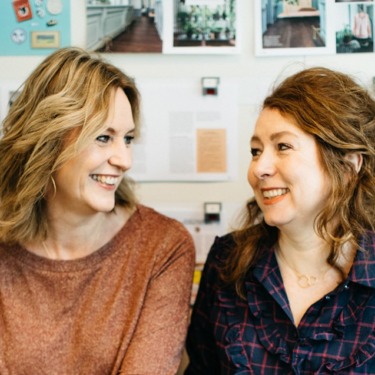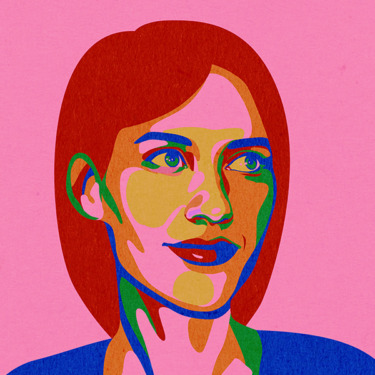How our surroundings impact our happiness
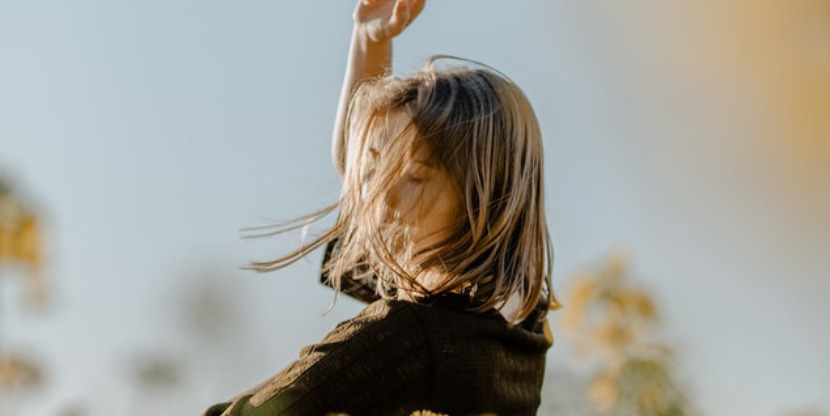
We’re constantly hearing how happiness comes from within. but it’s also true that your environment can bring you joy: flowers on someone’s windowsill, the blue hues of the ocean, a browse through a paper shop. In issue 35 Annemiek Leclaire explores how our surroundings impact our happiness.
I once visited a museum in the middle of the Netherlands – a building made of dark stone. It is situated beautifully among some trees, but I found the squareness of the building depressing and the bare, wet tree trunks visible through the large windows reminded me of prison bars. I was already feeling rather shaky after a period full of losses, but then my mood just spiraled.
Later that day, when I entered a hotel lobby back in town, the depression slipped off me like a heavy cloak. Here there were curved corridors, light wooden features and a courtyard with lush green plants. Wherever I looked I had a view of water. I was amazed by how refreshed I felt. Apparently, I thought, as I looked out at the water with a sense of relief, I like symmetry less than organic lines, dark less than light, stone less than wood, forest less than water. But why is that?
The nature of our minds
We constantly hear that happiness comes from within, but the environment plays an important role in how we feel, too. Environmental psychologists such as Gary Evans from Cornell University College of Human Ecology in the US have been mapping what aspects make us happy and which make us depressed.
In architecture, most people like a light, clean environment with easy sight lines, and without dark, bleak, windy corners. Conversely, Evans writes in his article The Built Environment and Mental Health, the buildings in which people feel most unhappy are tall, large and impersonal, with long anonymous corridors and no cozy nooks where groups can stand and chat.
Considerable research has also been done on the effect of nature on our minds. Whether it is the so-called fractal forms of leaves and flowers or the unimpeded view of vegetation and horizons, it’s a fact that a view of nature improves concentration and has a calming effect on body and mind. Jolanda Maas, senior researcher at the VU Amsterdam university in the Netherlands calls this ‘Vitamin G’ (where G stands for green) in her 2009 dissertation on the subject of healthy environments.
All around the world, there are buildings springing up that have vertical forests built into the facades. As Dutch architect Timo Cents explains, “Anyone looking out at greenery will feel better. All that greenery makes people feel calmer, less stressed, and happier and healthier in general.” Now that it is proven that a view of greenery can even have a healing effect, healthcare institutions are also going green and it’s becoming more standard for nursing homes and hospitals to create views of lawns and trees. This is called a ‘healing environment’.
Joyfulness
Colors, prints and shapes also influence the way we feel. US-based designer Ingrid Fetell Lee has been studying precisely what makes people happy for years. According to her, the term ‘joyfulness’ means an intense, temporary state of positive emotion that you can identify through clear signals such as smiling or laughing, and by the feeling that you want to leap into the air. “A high-energy form of happiness,” she calls it.
It is slightly different than happiness, which is more durable and is experienced as a calmer state of mind. It is also not the same as pleasure, which goes deeper. Joyfulness is the spontaneous smile on your face when you see a row of abundantly flowering hollyhocks in the city, for example. Or it is the sigh of relief when you sit down on a sunny balcony or terrace with a view.
Fetell Lee has identified ten aesthetic features that make people feel joy: Most people become joyful from seeing bright colors because they are energizing powers. We often get joy from cakes with candles, fireworks and piñatas because of their festive character. We tend to love a rolling stretch of lawn and a large body of water because of the associated sense of freedom; blossoming flowers attract us because of the sense of renewal; and we appreciate stars and the Northern Lights because they evoke a sense of magic in us.
Round shapes are attractive, according to Fetell Lee, because of the association with playing games. “I discovered the link with joyfulness when I looked at the shape of things that children like, such as soap bubbles, balls, balloons, hula hoops, merry-go-rounds and Ferris wheels,” she says. “I think we like round shapes because we associate them with our childhood.” Fetell Lee is also researching the origins of our aesthetic preferences. For example, the sight of abundance – such as in confetti, candy stores and flea markets – would give our brains, trained by evolution to avoid scarcity, the joy-inducing signal ‘morethan enough’.
Preferences
Some preferences are shared by everyone around the world. All cultures have a distinct preference for light and clarity, for example. “If we are given the choice of working in a room with clear daylight or in the basement, the vast majority will opt for the lighter space,” Fetell Lee says. Everywhere in the world, people also love vast, Savannah-like landscapes. According to Agnes van den Berg, professor of Experiencing and Valuing Nature at the University of Groningen, the Netherlands, this preference has evolutionary roots. ‘These landscapes offer the opportunity to hide as well as to explore,’ she writes in one of her academic articles.
Whether we like something or not is also often determined by what we need at the time. For me on that gray, wet Sunday, when my head was full of questions and my heart was heavy with loss, the last thing I needed was a building that looked like a funeral home. Dutch environmental psychologist Joren van Dijk agrees, adding, “It also depends on the person and the situation. Some people like it when a city square is spacious and well-arranged, but a child probably won’t like that there is a lack of hiding places.”
Van Dijk personally likes a workspace with an unencumbered view of greenery, because he is quickly distracted. “But someone whose work has an interactive role with people usually prefers a more central location,” he says.
Personal preferences also play a role in our appreciation of landscapes. Van den Berg investigated why some people tend to prefer manicured landscapes while others prefer rugged nature. In her article Lost in the Wilderness, she writes that she found that people who prefer rugged nature are better at suppressing the negative connotations of death and destruction, allowing them to enjoy more of the many positive things that wilderness has to offer.
